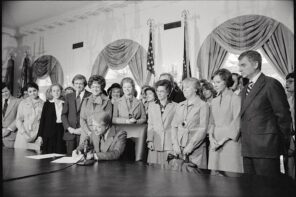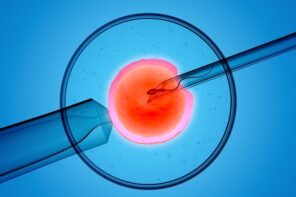Death (The Open Yale Courses Series)
by Shelly Kagan
Yale University Press, May 2012
The Undead:Organ Harvesting, the Ice-Water Test, Beating Heart Cadavers—How Medicine Is Blurring the Line Between Life and Death
by Dick Teresi
Pantheon, March 2012
On my desk I keep a photograph of the Jewish cemetery in Warsaw. It’s a beautiful picture, with its skewed tombstones among spindly trees. But I don’t keep it around for aesthetic reasons. It’s my memento mori, a reminder that life is short, so I’d better stay focused and kind, or try to.
This is my definition of a meaningful life. But the picture is no help in defining a meaningful death—or the meaning of mortality itself. So (to paraphrase Saul Bellow) the question remains: What do we do about death? How do we live with the fact of our mortality?
Many (obviously) look to religion for answers. Not me. Even if I consider myself somewhat religious, I have a hard time accepting the life-after-death claims of my own religion, Judaism. The dilemma is not uncommon: Although 80-90% of Americans believe in God, some 25-50% do not believe in life after death (the numbers depend on the study). So when considering death, many of us turn to less spiritual pursuits.
Two recent books attempt exactly that: to explore the nature and meaning of death without religious filters. Shelly Kagan’s Death uses philosophy to define mortality and how best to live with the knowledge of it; Dick Teresi’s The Undead explores how science and technology is changing how we define death—and not for the better.
Kagan’s book is the better by far, perhaps because he’s had the opportunity to hone his ideas—Death is adapted from a popular course that he teaches at Yale University.
He begins with a discussion of “the metaphysics of the person,” or “what kind of a thing a person is.” One approach is “dualism,” the belief that a person is “two basic components,” a body and a soul. The other response is “physicalism,” the belief that “all we have, or are, are bodies.”
Kagan is a physicalist: “The body works and it breaks. That’s all there is to death.” But that doesn’t mean that it’s no big deal. According to the “deprivation account,” death is a bad thing—“it deprives you of the goods of life that you might otherwise be getting.” Conversely, when life only offers bad things—if, for example, someone is too sick to enjoy life and has no hope of recovery—then death is a good thing.
But how do we live, knowing that we’re going to die? Kagan believes that we should “be careful”—don’t get hit by a bus and thus deprive yourself of the good things. And, because our time is limited, we should be careful about our goals, measure the “choice of aims” against “the execution of our aims.” In other words, if you suck at acting, don’t try to be the next Meryl Streep.
Of course I am oversimplifying a complex and thought-provoking book. But be warned: it’s a slog, a relentless series of thought experiments and abstruse detail. Kagan, to his credit, alerts the reader that “philosophy can be hard stuff to read.” Still, this stuff could have been easier. “Death” has too many paragraphs that (a) announce an argument; (b) make the argument; then (c) remind you of the argument. It’s a strategy that probably works better in the lecture hall than on the page.
Still, in terms of usefulness, Kagan’s ideas are well ahead of the ones that Teresi puts forward in The Undead. I expected Teresi’s book to be an intelligent discussion of the limitations of medical science when it comes to death and consciousness; instead it’s a somewhat rambling polemic against the organ donation industry.
Teresi does provide an interesting “history of death,” demonstrating the longstanding uncertainty about it. To ensure that a corpse was a corpse, the Greeks severed one of its fingers; the Romans gave the body a rubdown with hot water (better, then, to be mistaken for dead in Rome). “Hebraic schools” (Teresi doesn’t say which ones) debated determining death by breath or heartbeat; medieval accounts of premature burial suggest that “decomposition was the only litmus test.”
But the real problems began in 1968, when a Harvard Medical School committee determined that brain death occurs when the patient suffers a “loss of personhood,” or a “permanently nonfunctioning brain.” The committee put forward four criteria that doctors should use to determine brain death: unresponsiveness, lack of movement or respiration, no reflexes, and lack of brain activity.
Over forty years later, doctors still use these criteria. But one problem, according to Teresi, is that perhaps two-thirds of these determinations are done improperly—doctors skip steps or fail to consistently apply the criteria. Another problem is the criteria themselves, which don’t account for states that mimic brain death, like “persistent vegetative state, minimally conscious state, locked-in syndrome, and coma” (thus “the undead” of the book’s title).
This is frightening stuff, and it should make us reconsider the trust that we put in the medical community—especially if doctors are harvesting organs from living people. But Teresi’s arguments can be remarkably weak. He reminds us frequently that he is a “science writer,” and yet his evidence is largely anecdotal, a collection of stories. And he makes too much of the profit motive. “The transplant industry is a $20-billion-per-year business,” he reminds us. Well, so is weight loss and self-storage.
Teresi does raise some troubling points about the “lowly status of the organ donor.” The District of Columbia, for example, allows doctors to “pre-harvest” organs without donor cards or family consent. Thus tourists who have the misfortune of dying in D.C. can end up as spare parts.
Ultimately, though, The Undead doesn’t add up to much. Teresi insists that “As a journalist, I’m not supposed to care one way or the other. I’m simply supposed to provide accurate information.” This is a remarkable assertion to make in such a tendentious book. Perhaps there is a small number of Americans losing their lives at the hands of hasty harvesters; even a very small number would be too high. But I had a hard time summoning any outrage.
In the end I learned much more from Kagan—ironically because his aims are in a way more modest. He wants to convince you of his physicalist stance; however, he doesn’t want to tell you how to reconcile with death. That part is up to you. So maybe it’s not a question of how to live with the fact of our mortality; maybe the better question is how to live, period.




